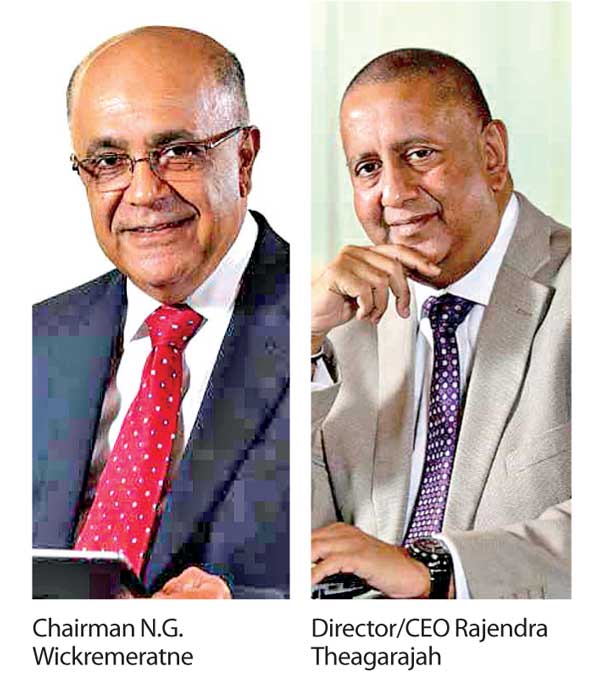Reply To:
Name - Reply Comment
 National Development Bank PLC group’s net profit for the quarter ended June 30, 2016 (2Q16) fell by 6.8 percent to Rs. 535.4 million or Rs.3.24 a share from a year ago as the performance was hurt by provisions made for possible bad loans, fall in income from the investments and narrowing margins in the rising interest rate environment.
National Development Bank PLC group’s net profit for the quarter ended June 30, 2016 (2Q16) fell by 6.8 percent to Rs. 535.4 million or Rs.3.24 a share from a year ago as the performance was hurt by provisions made for possible bad loans, fall in income from the investments and narrowing margins in the rising interest rate environment.
The fee and commission-based incomes too fell, the interim results showed. The bank share ended 20 cents or 0.12 percent lower at Rs.164.80 at last week’s trading close.
The loans of the bank on a standalone basis grew by just over 5 percent or Rs.10.9 billion during the six months ended June 30, 2016 (1H16), “amidst stiff competition”, the bank said in a statement.
The growth in the loans has mainly driven by the overdrafts which have risen by Rs.7 billion and the home loans too grew by another Rs.900 million.
The bank had a loan book of Rs.225.9 billion and an asset base of Rs.314.3 billion, up just 2 percent during the 1H16.
The growth in deposits has been fairly weak compared to the growth in loans as the portfolio recorded a growth of only 3.2 percent or Rs.5.9 billion. The bank has a deposit base of Rs.190.8 billion.
However, the bank’s low cost, current and savings accounts (CASA) base fell to 23.9 percent from 25.6 percent in December 2015, weighing on the funding cost and thereby taking toll on the margins.
NDB started raising customer deposits 10 years ago.
The net interest margin slipped to 2.61 percent from 2.63 percent six months ago demonstrating faster pace of re-pricing deposits over the loan book.
The net interest income however rose by 19.2 percent year-on-year (yoy) to Rs.2.2 billion but the rise in interest expenses outweighed the corresponding rise in interest income.
Net fee and commission income also narrowed by 6.3 percent yoy to Rs.738.1 million. Even the 1H16 growth has been a little 2 percent yoy to Rs. 1.5 billion.
The Director and Chief Executive Officer at NDB, Rajendra Theagarajah at the beginning of the year said fee income is a key lever and would closely monitor the bank’s ‘fees-to-net income’ ratio as key performance indicator.
Meanwhile, the bank’s trading investment portfolio has made a gain of Rs.268.7 million against Rs.259. 9 million in the corresponding period last year. These investments mainly consist of government securities, equity investments and any other short term investments but are held for
trading purpose.
However, the bank’s income from similar financial investments categorized under available for sale fell to Rs.57.6 million from Rs.141. 9 million a year ago due to, “upward movement in market interest rates”.
Other operating income of the bank which captures the revaluation gains and losses of its foreign exchange portfolio increased the loss to Rs.57.4 million from Rs.14.3 million.
Impairments – provisions made for possible bad loans – continued to trouble the bank’s profits as both specific provisions and general provisions rose 18.4 percent yoy to Rs.332. 9 million.
The gross non-performing loans slightly up from 2.43 percent to 2.54 percent but stayed below industry average.
Bank’s Tier I and Tier II capital adequacy ratios were marginally down at 8.50 percent and 12.51 percent, respectively, but remained above the regulatory minimum of 5 percent and 10 percent, respectively.
However, the bank’s Chairman N.G. Wickremeratne said fresh capital would be infused in the near future to support further expansion in loan growth but did not give a timeline.
The Central Bank does not want to see private credit growth above 20 percent in 2016.
Meanwhile, the banking group’s shareholder list also saw some notable changes during the quarter with the high net-worth individual, R.S. Captain increasing his stake to 8.16 percent being the third largest shareholder from 3.88 percent held in March 2016.
Further, CIC Holdings PLC also featured among the top twenty shareholders with a 1.49 percent stake being the sixteenth largest shareholder.
As of June 30, 2016, the government along with its parties held 30.01 percent stake in the bank while the state-controlled private sector pension fund, the Employees’ Provident Fund held 9.69 percent stake being the second largest shareholder.
Bank of Ceylon topped the list with a 9.91 percent stake.
Meanwhile for the 1H16 the banking group made a net profit of Rs.1.08 billion or Rs.6.56 a share, down 25 percent yoy.